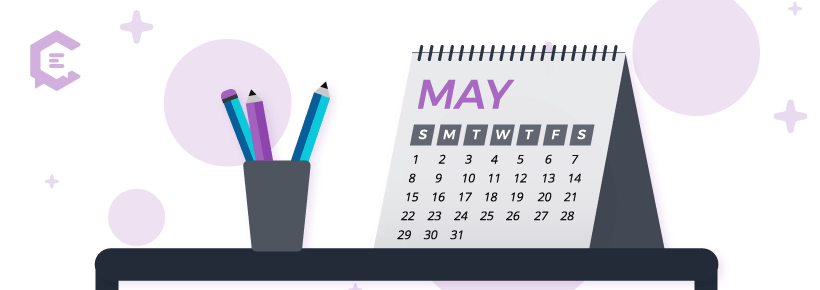In this series, we’re exploring the emerging and shifting world of newsletters. While once considered link-farm engines, today’s modern approach shifts an email into a platform to tell a brand’s compelling and unique message. In part four, we provide a no-brainer, easy-to-follow guide to starting the content and design creation of your newsletter, straight from industry pros who have mastered the process.
When you decide to invest in a new pillar of a company — from the smallest purchase to the largest chunk of change — it is normal to feel anxiety. And when you shift marketing strategy to introduce newsletters, getting started is usually the most difficult hurdle to overcome. How do you find subscribers? How do you plan out when you’ll send—and what you’ll write? How should it look? How do you promote it to your network?
The good news is by now, you’ve already figured out your target audience, studied up on other superstars trailblazing the way and decided the ‘why’ behind your email marketing campaign. Consider roadmapping (And ,well, creating!) the obvious next step to success. As every chief marketing officer and content strategist will reiterate, planning an editorial calendar and creating room for revisions and setbacks will save your sanity — and improve your overall performance, both internally and externally.
Here, industry experts share their best day-by-day advice on making magic happen in inboxes, in seven days:
Day one: Create a calendar
Part of the reason Sunday Scaries became an internet phenomenon is thanks to the mental shift it creates: looking ahead instead of remaining in the present. To prevent yourself from feeling overwhelmed at the tasks at hand, former marketing lead at About.Me and current producer at Bynd.com, Zoë Björnson, says your process from draft to “send’ should always begin with a bit of calendar planning. Regardless if you do this in Outlook, Evernote or any other platform that helps you stay focused, she explains your calendar should not only outline what you’re going to write about and when you’ll send it, but also the other parts of your process.
We’ll get to that later, but for a sneak peek, Björnson explains: “Make time in your calendar for brainstorming, writing, reviewing, and editing so that you’re not just faced with one big deadline, but rather multiple smaller ones,” she explains.
Here is where time-management becomes essential, as she stresses the important to giving each piece of the newsletter space to transform and change throughout the week — from design to subject lines. “Plan out your calendar so you can optimize for each piece of the process,” she adds.
Day two: Write the content.
Once you’ve mapped out what you’ll be writing about, now it is important to create a quiet, distraction-free space to put pen to paper. Or, if you’re not a wordsmith, give your writer direction on the voice and the mission of your newsletter. Regardless of how you go about it, Björnson’s greatest piece of advice here is to type without considering the idea of hitting the send button right after. “Giving yourself some freedom — hopefully in the shape of a well-designed calendar — will give you more room to write and make mistakes. The most important thing is getting your content out. Then you can focus on refining and tweaking,” she explains.
This is why marketing manager for Corkcicle, Kimberly Devitt, suggests getting comfortable and letting it flow, as well. “Creativity comes in waves. So be sure you’re in the right headspace before you start writing. I’ve found that by straightening up my desk, I am not only clearing my physical space, but I’m also freeing my mind of clutter as well,” she shares.
Though a more practical rule of thumb, Björnson suggests creating your content separate from where you’ll distribute it — mainly because technological and human mistakes are bound to happen. This means scribbling in Google Docs and only copying/pasting into HubSpot (unless you have a seamless integration) once you’re fully ready to go.
Day three: Map design needs.
If you’ve never worked for a magazine, publisher or newspaper, here’s a quick lesson on copy and layout: They go hand-in-hand, sometimes in unison, and other times, at odds. You can’t have one without the other, and they feed directly to one another.
More often than not though, content comes before design. So an illustrator or artist can understand the amount of space for digital graphics and for sentences. Once an imaginator can visualize the space for words and the area for photography or other elements, they can roll up their sleeves and get to creating. If you’re a small staff, Björnson suggests spending the extra hard-earned dough to hire an experienced designer, since it will take your newsletter from stock-image central to an enticing, captivating masterpiece readers will want to open. If your budget doesn’t allow? She says tools like Canva are great for quick visuals.
Day four: Start to collect subscribers.
While all of the parts are working together, Björnson says now is the time to share your “subscribe” link far and wide. While you want to target those in your hopeful audience, to begin, friends and family will gladly help you reach your number goals by tossing in their email address. For the best result possible (and not too much Facebook feedback), she says to keep the process easy and simple, without too many roadblocks.
“If your subscription is through a general website, make a separate page just for newsletter subscribers to go to and sign up. Be sure to set up a confirmation email in your newsletter service so that new subscribers know that they’ve been added to your list, plus a little personality that tells them about you and the cadence of the newsletter so that they know what to expect,” she shares.
Another way to continuously attract subscribes to your personal website, in addition to a landing page is via subscriber buttons, according to the CEO of The On Switch, Nancy A. Shenker. You can also keep yourself organized (and law-abiding) this way, if you plan on having multiple newsletters. “Make sure you have a good list management system in place, especially if you want different types of readers to get different content. Make sure you also set up ‘opt-out’ language—especially now that consumers are hyper-sensitive about data privacy,” she advises. (Learn more about GDPR and data privacy.)
Day five: Go through revisions.
Don’t think you need a full day to use a fine tooth comb (and those reading glasses when your eyes are tired from too much screen time) — to go through revisions? Think again, Björnson says.
Here’s the deal: The most thoughtful and engaging newsletters aren’t stellar at their first-go. Designers, writers and creatives of any kind thrive off feedback, resulting in less and less edits as time goes on. Especially during your first week of newsletter creation, giving yourself ample time to digest every last line and color will serve your business — and your brand. And hey, don’t be afraid to well, start over. “
Maybe even rewrite it totally, but keep the original just in case! Then, put it into your newsletter service and tweak as necessary. Content always changes when it’s put into final form, so mold it as needed,” she shares.
Day six: Run a test.
After sleeping on it — do you finally feel ready to release your product until the world and see where it takes you? Good for you. But hold on tight. One of the most overlooked steps in email marketing campaigns is the test drive.
Like a wedding rehearsal, live performance run-throughs and interview Q&As, setting up a test is highly recommended by the pros. If you can, choose 10 people you trust to do a read through to save your headache and stress. “Before sending out your newsletter blast to hundreds, thousands, even millions of email subscribers, it’s essential to test and make sure everything looks as it should — and works as it should, explains Director of Digital Content at Sachs Media, Ashley Perkins. “It will save you a lot of embarrassment and trouble if you catch that last-second typo you previously missed or a broken link in your call-to-action before hitting the ‘send’ button.”
Day seven: Prepare for takeoff — er, dispatch.
Now that you’ve written, revised and tested — you’re finally read to hit that ever-tempting (and totally scary) ‘send’ button. As one last stop-gap effort, Björnson says to preview it, read it through one more time, and schedule the sucker. “Your confirmation email will have given subscribers all the information they need to know when they signed up,” she continues. Once sent, she says to share a sneak peek, such as your subject line or snippet of the email, with your followers and a call-to-action to sign up for those who haven’t done so.











